We'll be continuing the series with two very different types of equipment. Let's start.
Mine-Resistant Ambush Protected Vehicles
Also: Infantry Mobility Vehicles, Protected Mobility Vehicles, Armored Cars, Tactical Support Vehicles, Protected Patrol Vehicles
International M1224 MaxxPro
Official vehicle type: MRAP
Appearance in Ukraine: July 2022
Country of origin: US
Unit Cost: $500K-$700K
Number sent: >462
Roshel Senator
International Husky TSV
Official vehicle type: Tactical Support Vehicle
Appearance in Ukraine: June 2022
Country of origin: UK (manufactured: US)
Unit Cost: $779K
Number sent: ~200 (not clear how many delivered)
Thales Australia Bushmaster
Official vehicle type: Protected Mobility Vehicle
Appearance in Ukraine: April 2022
Country of origin: Australia
Unit Cost: $1.6M
Number sent: 120
Other vehicles sent in quantities < 100
Oshkosh M-ATV (MRAP, US)
Iveco LMV (IMV, Belgium, made in Italy)
Other vehicles sent in quantities < 50
ATF Dingo (MRAP, Germany)
Cougar (MRAP, US)
Wolfhound (MRAP, US/UK)
Mastiff (Protected Patrol Vehicle, US/UK)
BMC Kirpi (MRAP, Turkey)
Background
The MRAP was conceived as part of an arms race between "insurgents" in Iraq and Afghanistan, and the Western forces arrayed against them. While the IED began as a decades-old unexploded Soviet ordinance detonated remotely via a garage door opener, it eventually developed into sophisticated magnetic-shaped charges detonated from great distances with multi-frequency cellphone signals. Five years into the GWOT, thousands of soldiers from NATO countries had been killed, and the majority were from IEDs.
Western forces were so susceptible to IED attacks (and subsequent ambushes) because their workhorse, the Humvee, had never been designed to withstand mines or IEDs. Attempts to "up-armor" the lightweight vehicle resulted in unacceptable compromises, turning it into an "ungainly beast" with 200-lb doors and a chassis that could crack when going over bumps due to its weight.
Inspired by a series of mine-resistant vehicles created by the Rhodesians and South African military, the MRAP program began in 2004 as a direct response to the IED issue in the Middle East. The key innovations were the V-shaped hull, which deflected blasts from below outwards, and the reinforced crew compartment designed to survive even if the rest of the vehicle were destroyed.
The first MRAP was the Force Protection, Inc. Cougar, a massive vehicle three feet taller, four feet longer, and six times the weight of the Humvee it aimed to replace. The Cougar was sent more or less directly to the Middle East before any testing by the US Marine Corps, who had been the first to inquire about the prototype design. The program was initially designated the "Hardened Engineer Vehicle," then the "Joint EOD Rapid Response Vehicle," and then finally, political pressure resulted in it being renamed again "Mine-Resistant, Ambush Protected," a direct response to the two biggest problems facing Coalition forces: mines and ambushes. The Cougar would later be modified by the British to become their own variant, the Mastiff.
Nine other defense contractors submitted MRAP program designs, and many of them went on to create vehicles that saw service in the Middle East. International Truck prioritized ease of production and parts availability in their design, the MaxxPro, which would be produced in enormous numbers. The Pentagon ordered 10,000 MRAPs in 2007 alone, and the size of the program grew to $50 billion.
The MRAP was much better than the Humvee, which it replaced in most respects. IED survivability went up dramatically, then dipped down slightly as IEDs increased in size to compensate, and then back up again as MRAPs were themselves up-armored. When the GWOT ended, the US alone had 20,000 MRAPs in service.
Prior to and in parallel to the US's MRAP program, militaries around the world developed another "new" class of vehicle: the Infantry Mobility Vehicle. The IMV is meant to fill a role once occupied by the humble Jeep, quickly transporting troops around the rear while protecting them from small arms fire and even explosives like rocket-propelled grenades and IEDs. The difference between an MRAP and an IMV is ambiguous. All MRAPs could potentially be considered IMVs, but some IMVs are not designed to provide total protection from mines and IEDs. A vehicle that is classified as an IMV may become an MRAP through up-armoring. The Humvee could be categorized as an IMV, even though it was created before the label itself existed.
IMVs span the gamut from the 16,00lb Roshel Senator and its endless variants to the Bushmaster "Protected Mobility Vehicle," which can carry 9 soldiers and their equipment. The key characteristic of the IMV is that it gets soldiers around while protecting them from asymmetrical threats, like small arms fire, and gives them a fighting chance of surviving explosive threats.
The Hype
Because there were nearly unlimited quantities of MRAPs and IFVs sitting unused in vehicle pools, NATO quickly sent large numbers to Ukraine after the war began. This happened with little fanfare initially, and MaxxPros began appearing in videos taken from the front prior to any announcement they were being sent.
The hype cycle for MRAPs and IFVs was restrained in its exuberance compared to other entries in this series. However, for countries with much less to offer in aid than the US, like Canada, Australia, and the UK, it became a point of national pride to send their vehicles to the front.
[The Bushmaster is] fantastic. Words cannot express it. It's such a powerful vehicle. It is much easier to drive than our equipment. The Bushmasters work perfectly. They can withstand RPG shots, run into mines, and tame enemy machine guns. - Member of 80th Air Assault Brigade, ABC Australia
The quantities sent were impressive, too. While it was great to say thousands of Javelins had been sent to Ukraine, pallets of boxes of launchers didn't inspire in the same way a column of 20 MRAPs charging toward the frontline did.
Initial reports of their performance were stellar. Just as MRAPs had saved American lives in Afghanistan, they were saving lives in Ukraine. The Ukrainians loved the Western equipment and said they much preferred the MRAPs to their own domestically developed IMVs.
“The MaxxPros are like a red rag to the Russians, they target it with everything they have,” Stepan said. “But they are almost indestructible.” (The Times)
The hype only truly began to build as the AFU prepared for their 2023 counteroffensive. After the Ukrainians openly released an actual trailer for it, there was no doubt it was coming. And now that the Russians were truly on the defensive, it was reasonable to expect the Ukrainians would be coming up against mines. What better vehicle for dealing with a threat from below than the ones specifically designed to be mine-resistant?
Because they were nearly indestructible, some thought MRAPs may even be able to play the role of mine clearer:
This would make a lot of sense for Ukraine... with MRAPs, Ukrainian forces could in effect “clear” areas of Russian mines, locate the mines and find routes for safe passage for Ukrainian infantry. - Kris Osborn
The Reality
The presence of the true MRAPs (the MaxxPro, Cougar and its derivatives, the Turkish Kirpi) in Ukraine was a compromise from the very beginning. Grumblings about just what the hell we were going to do with the 30,000+ MRAPs produced for the GWOT started way back in 2007. Even destroying them in place in Afghanistan was too expensive to consider – $10,000 per vehicle – but transporting them out of the country was even worse; only a few cargo planes could airlift them, and doing so cost as much as a third of the price of a new MRAP itself.
The US began handing out MRAPs like candy. They sent bundles of them to the UAE, Egypt, Pakistan, Iraqi Security Forces, the Kurds, the African Union in Somalia, Uzbekistan, Poland, and Croatia. The recipient was typically required to agree to pay for shipping. But even this wasn't enough – there were too many MRAPs and not enough countries willing to take them. The Department of Defense solved this issue by creating a program to find a way to dump 13,000 MRAPs on American police departments. The value of all those vehicles totaled in the billions, and even typically well-funded American police departments were unlikely to be able to afford to buy them. The DLA got creative, creating a structure where the Pentagon still technically "owned" the MRAPs, but local police departments would pay the thousands needed to ship them across the country and take them out of DoD motor pools. Once they had been distributed, it would be unlikely they would ever be shipped back due to the high cost. And local police were happy to have them.
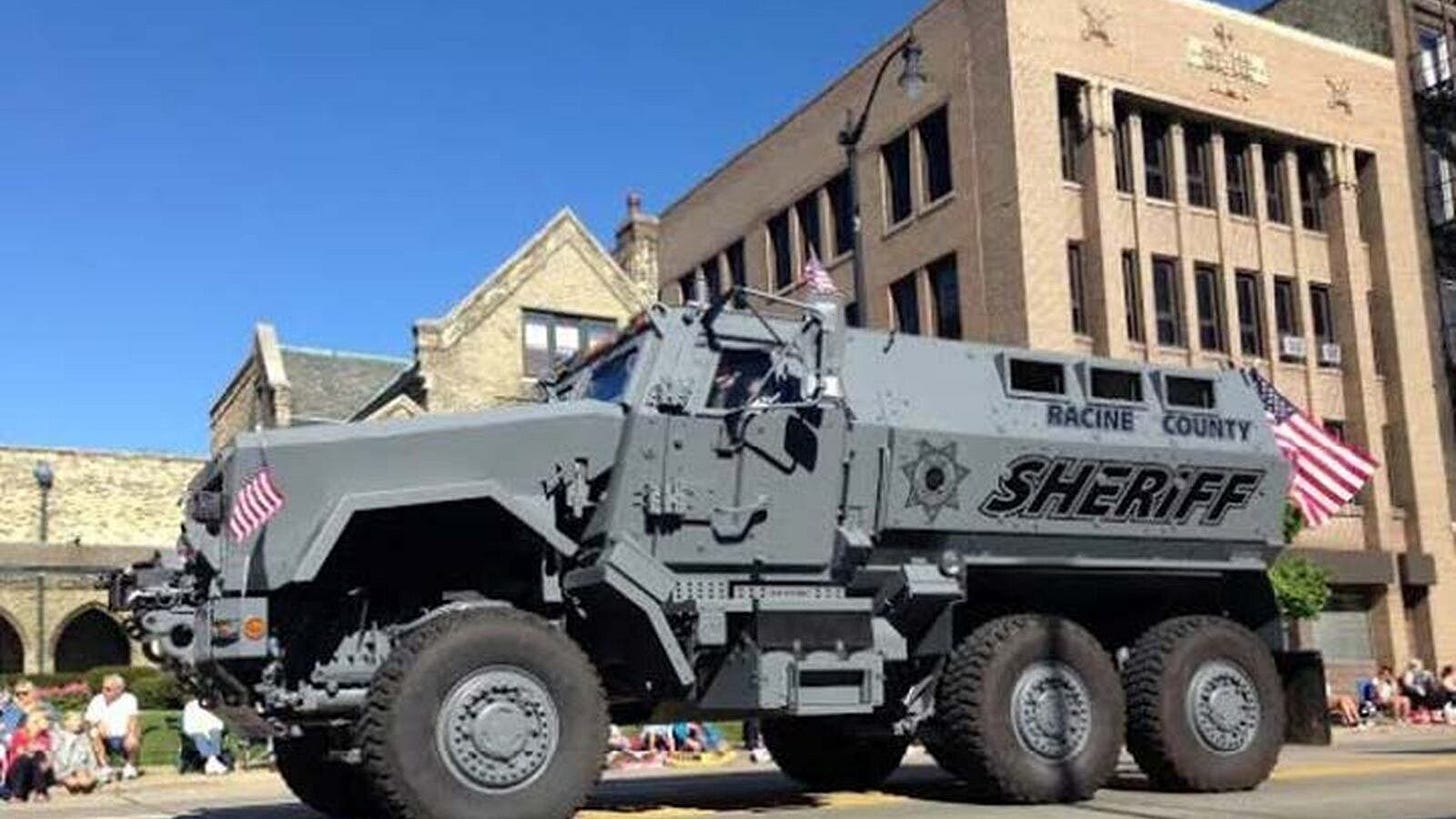
This program faced harsh criticism in the US. Why did police departments need a vehicle designed to withstand IEDs and RPG ambushes? The name of the class, which was chosen to satisfy political pressure, wound up creating its own political pressure. Nevertheless, thousands of MRAPs became the responsibilities of American city governments, who paid the costs for maintenance and storage, satisfying the Pentagon.
However, thousands of MRAPs remained in the DoD's inventory. The largest of these—the MaxxPro and Cougar—were a particular problem because the DoD had no intention of keeping them in service. Smaller models like the M-ATV would serve as stand-ins for the eventual Joint Light Tactical Vehicle, the next-generation replacement for the Humvee. There was simply no perceived need for large IED-resistant vehicles as the GWOT came to a close.
Enter the Russo-Ukrainian War. Suddenly, the expense of transporting aging MRAPs became an asset instead of a liability. If it cost $100,000 to send a MaxxPro to Ukraine, that was $100,000 more the State Department could say it had given in military aid (in addition to the cost of the MRAP itself). Unlike with police departments, once a vehicle had been sent over, there was no chance of it coming back. And for the Ukrainians, these vehicles were certainly better than nothing. This was a golden opportunity to get rid of lots of MRAPs for good.
After a few months in the country (in a refrain that should be becoming familiar), it became clear that the vehicles were in the wrong war. The MRAPs, in particular, had design issues unique to the problems they were built to solve. They were among the tallest vehicles in Ukraine—the V-shaped hull requires extra clearance—making them a large profile, easy-to-hit target for ATGMs and FPV drones. Their height makes them top-heavy and prone to rolling over.
Due to their weight (only four tons less than a BMP-3, in the MaxxPro's case) and use of wheels instead of tracks, they had a tendency to get stuck in mud—especially during rasputitsa, Ukraine's rainy season.
But if the Ukrainians had simply used them the way the US had considered using them, as unwieldy, heavy IMVs, these drawbacks would have been tolerable. What the Ukrainians were doing in many cases, however, was using them as a substitute for IFVs and APCs.
Reports emerged of the AFU directly assaulting Russian positions in their MRAPs and IMVs. The Ukrainians didn't receive any M2A2 Bradleys until April of 2023 (and only then in limited numbers), so they were making do with what they had. But MRAPs had never been designed for an environment like the Ukraine War, and they certainly hadn't been designed to conduct direct assaults in such an environment. Pictures and videos of destroyed MRAPs began to become commonplace. After the beginning of the 2023 counteroffensive, they exploded. In a battlefield environment in which main battle tanks were being destroyed in large numbers by the Kornet ATGM, FPV drones, Krasnopol guided shells, and Ka-52 attack helicopters firing LMUR missiles, the MaxxPro, Bushmaster, Cougar, and Senator were easy prey.
Prior to the introduction of the MRAP, GWOT planners were concerned that the vehicles would leave American troops stranded after an IED detonation. The vehicles had been specifically designed to preserve the crew even if the wheels had literally been blown off. However, American superiority in numbers and equipment ensured this was rare. Ukraine was a different story, which became clear during the 2023 AFU counteroffensive. MRAPs disabled in direct assaults through minefields left their occupants in lethal situations. The squad inside might survive if they only hit a single mine, but they would then have to attempt a retreat on foot under withering Russian fire. And if the vehicle were unlucky enough to be hit with a Kornet, LMUR, or FPV drone attacking from above – threats the MRAP had never been designed to face – their prospects of survival were slim.
The idea that MRAPs were so mine-resistant that they could be used to actually clear minefields became a distant memory. No one had anticipated the extent of mining the Russians had achieved during the months they had had to prepare their defense. Columns of armored vehicles attempting to cross these minefields were forced to halt before making it even a few hundred yards. MBTs, APCs, and MRAPs suffered from the same fate. The joke went that if they were mine-proof, they would have been called MPAPs.
The reaction to this was similar to images of much heavier armored vehicles being destroyed: at least the crew survived. Unlike Leopard 2s and Bradleys, it wasn't clear this was typically the case with the MRAPs. Gruesome images and videos I won't post here showed that there were limits to the protection MRAPs could provide. But that didn't stop commenters from assuming the crew had always made it out.
Vehicles like the Roshel Senator fared even worse. While working great as a nimble IMV far behind the front lines, it had originally been designed for use by law enforcement, and when the Ukrainians brought it anywhere near active sectors of the front, it stood little chance of survival.
Losses of MRAPs and IMVs used for assault operations piled up. A current tally of confirmed losses from LostArmour (destroyed only, doesn't include disabled or captured):
MaxxPro: 142
ATF Dingo: 9
Bushmaster: 20
Cougar/Mastiff: 42
Husky: 24
M-ATV: 22
Senator: 51
MRAPs made more sense in Ukraine than they did on Main Street in small American towns, but their limitations in the role the Ukrainians wound up using them for proved deadly. If the AFU had received Bradleys, Marders, and Strykers in much greater numbers earlier in the war, they wouldn't have had to make do with MRAPs. If they hadn't needed to directly assault multilayered defensive lines protected by the densest minefields in a modern conflict, their losses wouldn't have been so severe. But these were the situations they were confronted with, and what they had to tackle them with were vehicles created for a completely different purpose and a completely different enemy. MRAPs and IMVs didn't change the game.
Game Changer Rating: 1/10
Lockheed Martin M142 High Mobility Artillery Rocket System (HIMARS)
First referred to as a game changer: April 2022
Appearance in Ukraine: June 2022
Country of origin: USA
Unit Cost: $4M-20M, $434K per GMLRS rocket
Number sent: 39
Manufacturer market cap: $133B
The Hype
As territorial exchanges in Ukraine began to slow to a crawl, artillery became the predominant killer of soldiers on both sides. Reports sprang up of the return of a form of combat that predated WWI: the artillery duel.
Counter-artillery systems reduced the turnaround time for friendly batteries to respond to barrages from the opposing side, and losses began to pile up. In this environment, Multiple-Launch Rocket Systems and Self-Propelled Guns became invaluable.
MLRS filled a different role than towed guns like the M777, which take time to set up and break down for transport. Those guns can provide sustained, accurate fire for hours to apply continuous pressure to a position, using small shells that are easy to transport. An MLRS, in contrast, is designed to enter a firing position, launch a single barrage of rockets, and then move to the rear to be reloaded (reloading can take as long as 45 minutes for some systems). Rockets can offer much greater range than artillery, keeping the MLRS safe from counterbattery fire, and their rocket salvo can saturate an area more quickly than a single traditional gun. The Ukrainians already had BM-21 Grad, BM-27 Uragan, and BM-30 Smerch systems, but not in huge numbers, and rockets for them would eventually run out.
Enter the M142 HIMARS. Created as a hyper-mobile alternative to the much heavier and more powerful M270, the HIMARS was the perfect system for an American military that needed to transport its assets to every corner of the globe by air. And what it lacked in magazine size (only six rockets to a pod compared to the M270's 12), it made up for in setup, response, and reload time. And unlike MLRS systems of decades past, the HIMARS could fire pinpoint-accurate GMLRS GPS-guided rockets. The range of these rockets well exceeded even the impressive ~40 miles of the army's Excalibur 155mm shell. HIMARS GMLRS pods could even be swapped out for a single tactical ballistic missile, the ATACMS (the ATACMS will be covered in more detail and on its own in a future entry of this series)
When the Ukrainians received their first batch of HIMARS, they immediately put them to use, striking Russian command posts and ammunition depots that were previously out of reach. The reaction from the media was ecstatic.
Ukrainian forces are increasingly targeting Russian military infrastructure with indirect fire and US-provided HIMARS systems deep in occupied territory.” It concludes that “the increased ability of Ukrainian forces to target critical Russian military facilities with Western-provided HIMARS demonstrates how Western military aid provides Ukraine with new and necessary military capabilities. (ISW)
The Russians had placed many logistics depots as close to the front as possible to rapidly resupply troops in forward positions. With the presence of the HIMARS, areas once under minimal threat suddenly became vulnerable. Facilitated by NATO ISR, the Ukrainians embarked on a devastating campaign to cripple Russian logistics. With Russia's ammunition supply outnumbering the AFU's by perhaps 10:1, this was a strategic effort that could completely change the balance of power in the war.
Russia had lost most of its key ammunition depots, and many of its smaller depots in occupied Donbas. Notably, many key targets as much as 50-80 kilometers into Russian-controlled territory have been successfully destroyed. (Kyiv Independent)
The Russians didn't appear to have an answer to the HIMARS. Their vaunted air defense capabilities seemed unable to deal with the rocket barrages now raining down on the heads of their commanders and logistics officers.
“The Russian S400 air defence system was advertised as an anti-missile system as well, but it hasn’t been able to detect or stop the HIMARS.” (Frank Ledwidge, British Army (ret.), France 24)
The Reality
Unlike every other system so far in this series, the HIMARS was a perfect fit for the Ukraine War. Its mobility and accuracy formed a powerful combination that sent the Russian military scrambling to respond. The Russians had made a series of compromises with the positioning of many of their logistics nodes. A shortage of trucks meant they had had to stick close to rail stations, and the consequences were explosive.
The Russian Defense Ministry publicly declared HIMARS an ultra-high priority target. A propaganda war ensued, when the Russians claimed kills on HIMARS, the Ukrainians claimed only decoys had been hit. With the low number of HIMARS in theater, a small number of losses had the potential to cause a major impact. The Ukrainians protected their HIMARS over any other system in theater. Currently, Lost Armour counts 9 HIMARS losses, with all but one being after the beginning of Spring 2024. That meant that during the first two years of the war, the AFU's dozens of HIMARS systems had mostly evaded the lethal Russian Lancet drone.
But the Russians had an ace up their sleeve. Like the Excalibur shell covered previously, the GMLRS was GPS-guided. Its secondary inertial guidance system wasn't nearly as accurate. When the Russians began jamming GPS across the front, the accuracy of GMLRS rockets plummeted.
Ukrainian military officials, with the US’ help, have had to come up with a variety of different workarounds as it continues to use the High Mobility Artillery Rocket System (HIMARS) which has been perhaps the most revered and feared piece of weaponry in Ukraine’s fight. The medium-range rocket systems were hailed as a game changer in the conflict and have played a key role since the moment they arrived in Ukraine last summer, including in last year’s offensive that allowed Ukraine to take back significant swaths of territory from Russia. But in recent months, the systems have been rendered increasingly less effective by the Russians’ intensive blocking, five US, British and Ukrainian sources tell CNN, forcing US and Ukrainian officials to find ways to tweak the HIMARS’ software to counter the evolving Russian jamming efforts. (CNN)
The Ukrainians were destined to lose in an arms race between jamming and counter-jamming. Only so much could be done through software, and Russian electronic warfare capability increased steadily day by day. In parallel, the Russians worked overtime to resolve their logistics issues, moving depots out of the range of HIMARS launchers. The system went from "less effective" in late 2022 and early 2023 to "completely ineffective" by 2024.
A confidential internal Ukrainian military report leaked to the press in May of 2024 revealed the extent of the problem.
A battalion commander, speaking on the condition of anonymity because he was not authorized to do so publicly, described flying a reconnaissance drone in foggy conditions last year in Bakhmut to track a HIMARS strike on a Russian position. On his screen, the commander watched in dismay as each rocket missed. (Washington Post)
The Ukrainians had sounded the alarm in 2023, urgently requesting that their Western partners assist them with either countering Russia's jamming somehow or modifying weapons systems that relied on GPS guidance. But the development of rockets that didn't rely on GPS at all could take years, and the notoriously sclerotic Western military-industrial complex didn't have that much time. Some in their camp had anticipated that the Russians had developed sound electronic warfare systems, but they hadn't been prepared for how widespread or effective they'd be. Even guided munitions that didn't primarily rely on GPS started to lose their accuracy, and Western militaries didn't understand why or weren't willing to go on the record with the reasons.
The senior Ukrainian official said Kyiv shared this feedback with Washington but got no response. The Ukrainians have faced a similar challenge with guided 155mm shells provided by other Western countries. Some employ guidance other than GPS, and it is unclear why they also became less effective. U.S. defense officials declined to address the Ukrainian assertion. Rob Lee, a senior fellow with the Foreign Policy Research Institute, a Philadelphia-based research group, said that Russia’s use of electronic warfare to combat guided munitions was an important battlefield development in the past year. The involvement of defense companies is crucial to overcoming Russian defenses such as jamming, Lee said. “The problem with a lot of Western defense companies,” Lee said, compared with Russian manufacturers, is that “there is not the same sense of urgency.” (Washington Post)
The Ukrainians attempted to counter the accuracy issues by loading the HIMARS with cluster munitions, which didn't need to be as accurate (cluster munitions will be covered separately in a future article). But while cluster munitions could be useful, they were incapable of replicating the long range precision strikes which had made the HIMARS so potent. Meanwhile, Russian air defense systems were gradually updated to handle the flight profile of HIMARS, and its rockets began to be intercepted.
As with other systems in this series, the Russians had equivalents, including the 9K512 Uragan-1M. And their ability to conduct precision strikes on logistics nodes was incomparable to the Ukrainians anyway because they possessed a dizzying array of accurate cruise and tactical ballistic missiles, like the Kalibr and Iskander platforms. Even if the HIMARS had maintained its precision in the face of jamming, the Ukrainians could, at best, only hope to catch up. Until the introduction of the ATACMS, they were limited to Soviet-era TBMs like the Tochka-U, which the Russians had long since replaced.
The HIMARS had, for a significant window of time, changed the structure of Russian logistics, which had strategic consequences. But its usage with GPS-guided rockets ensured it met the same fate as the Excalibur shell. The story of the HIMARS should make us wonder what it truly means for a system to be a game changer. If a system produces a strategic change, which is then erased by the enemy adapting to that change, has the game fundamentally changed? In a conflict measured in years, the side which wins an arms race emerges more resilient to future threats than if they'd never faced a game changing situation in the first place. What doesn't kill you makes you stronger.
This won't be the end of the HIMARS' story in this series, as the Ukrainians sought to overcome Russian GPS jamming with ATACMS later in the war. Evaluating its performance with GMLRS rockets, however, its game changing effect was profound but fleeting.




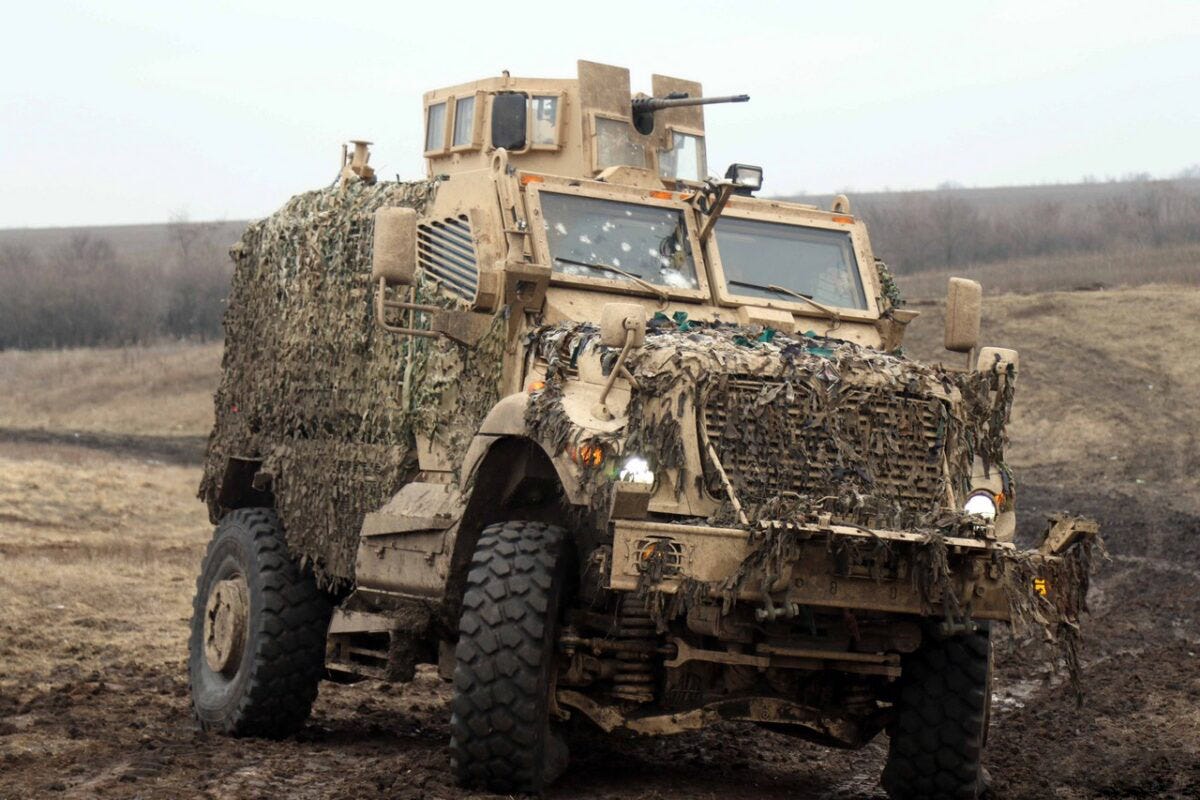
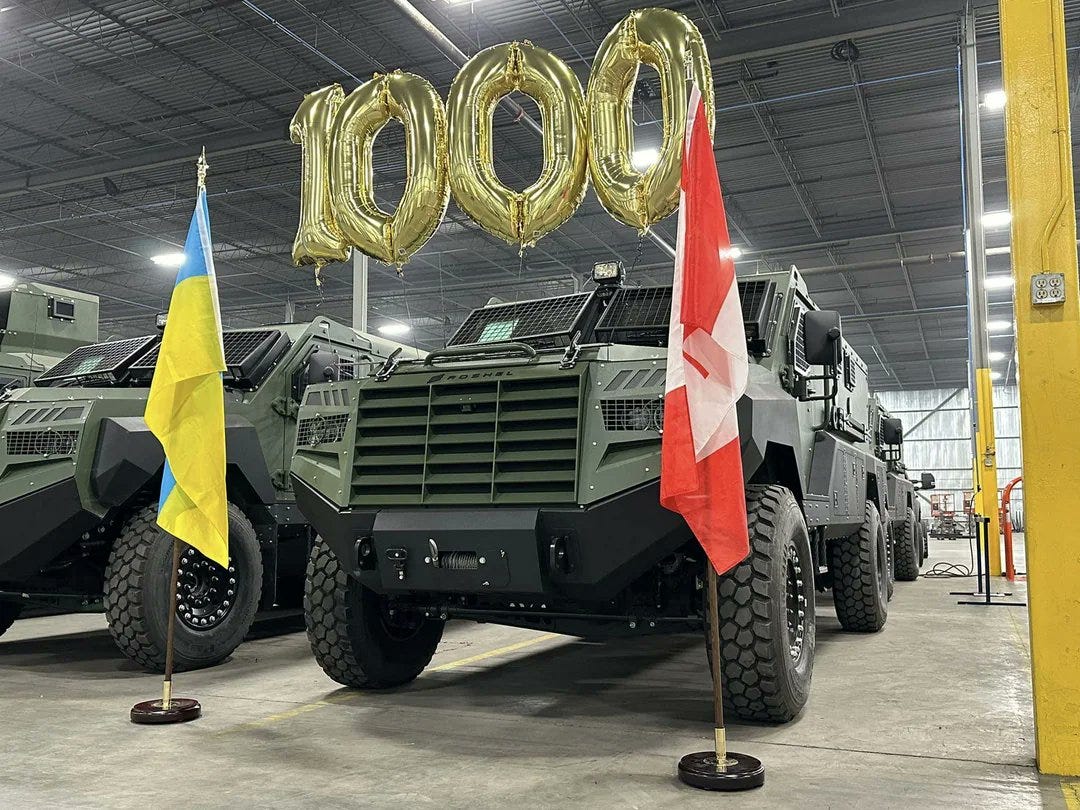
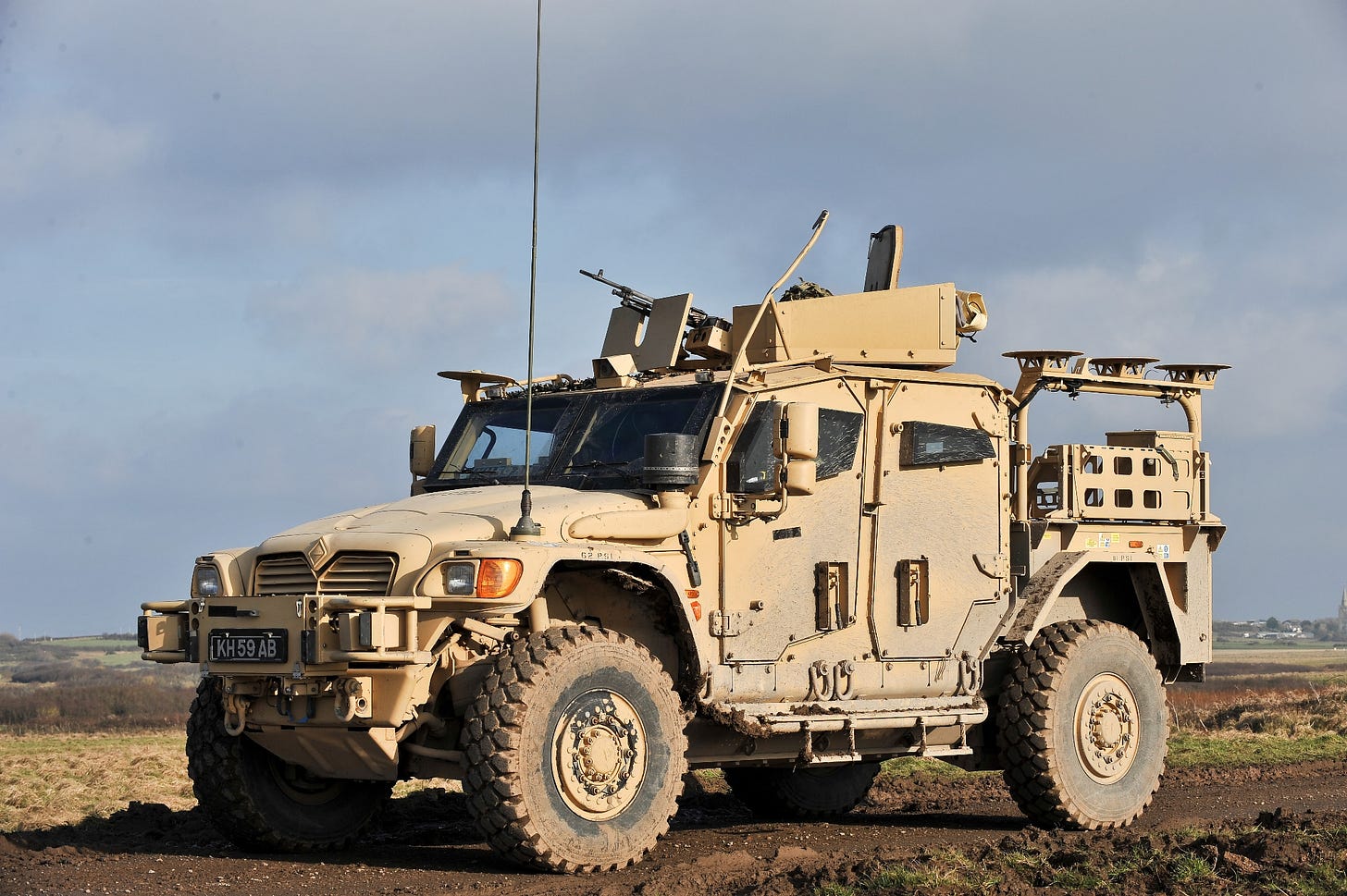
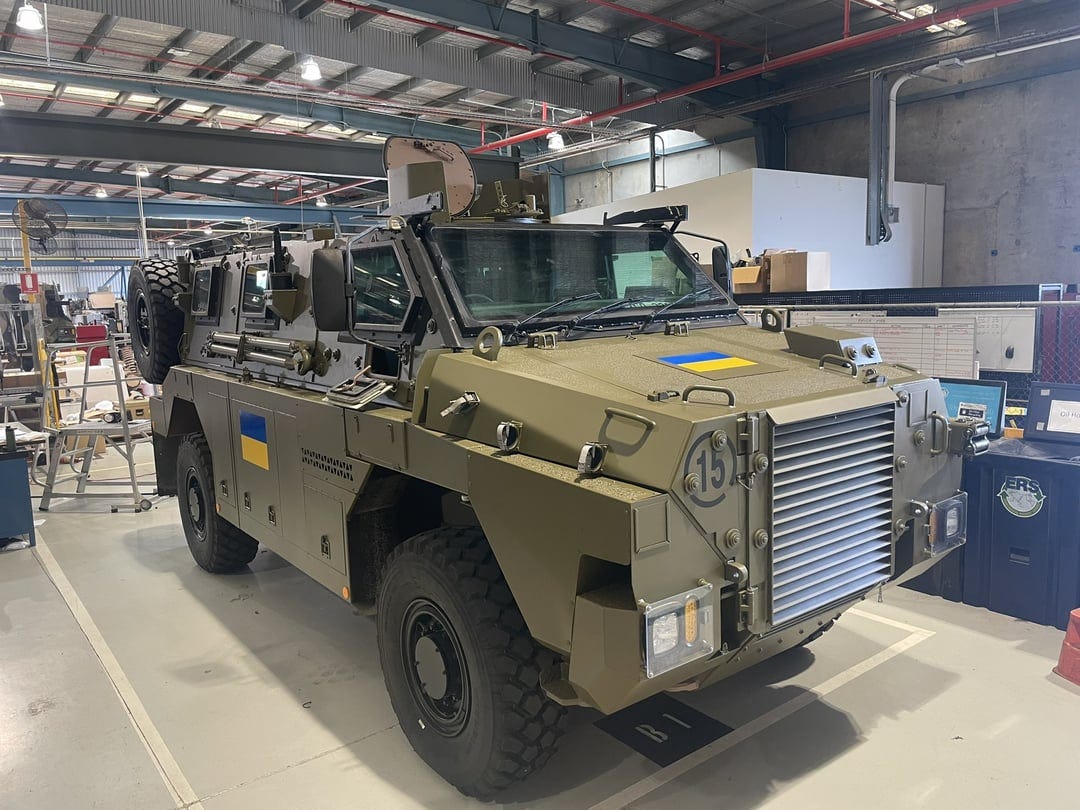
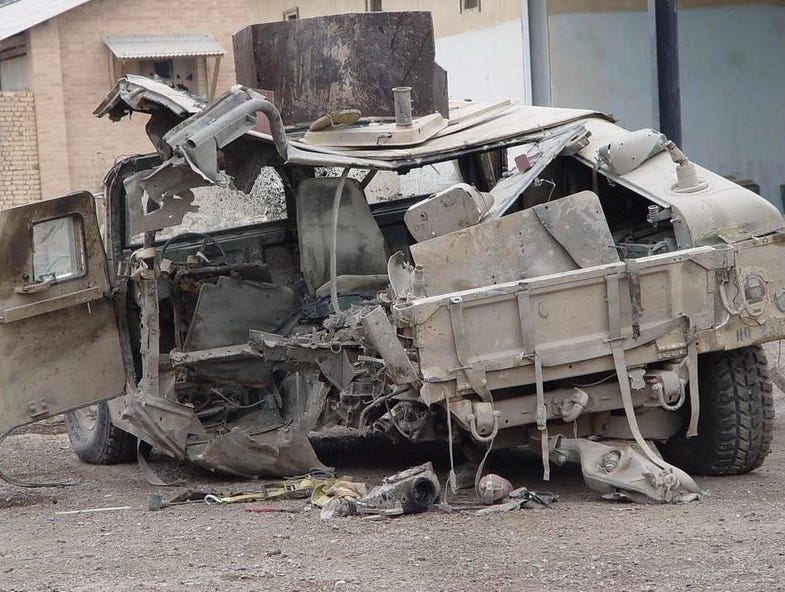
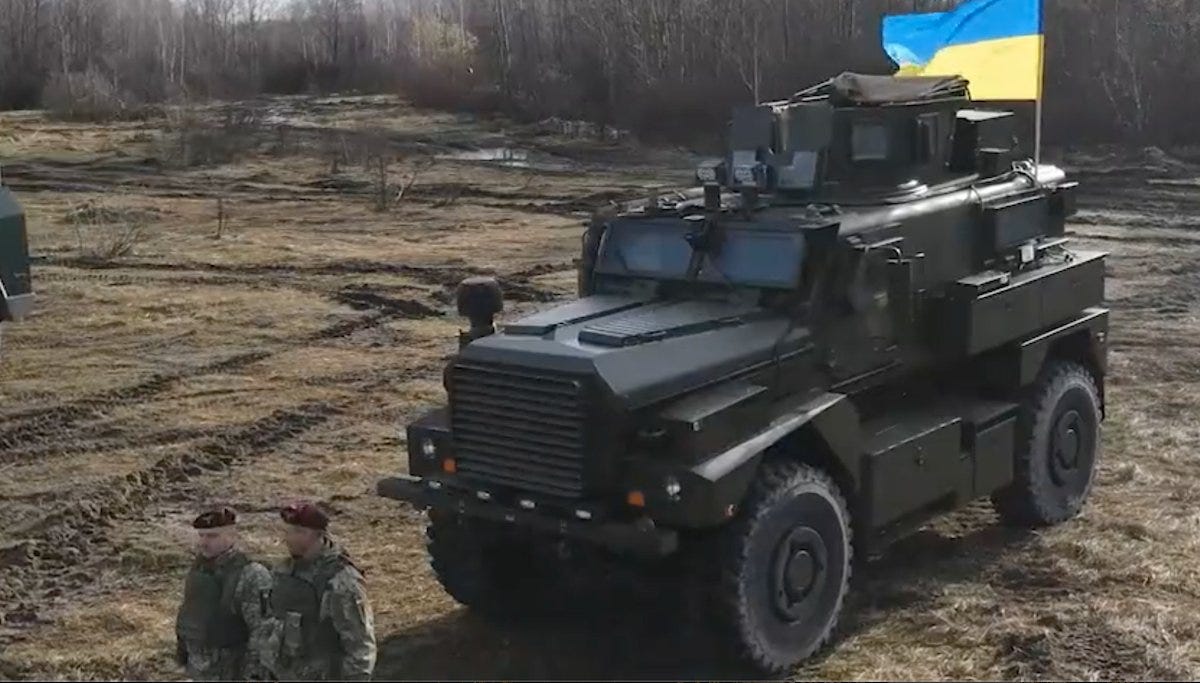



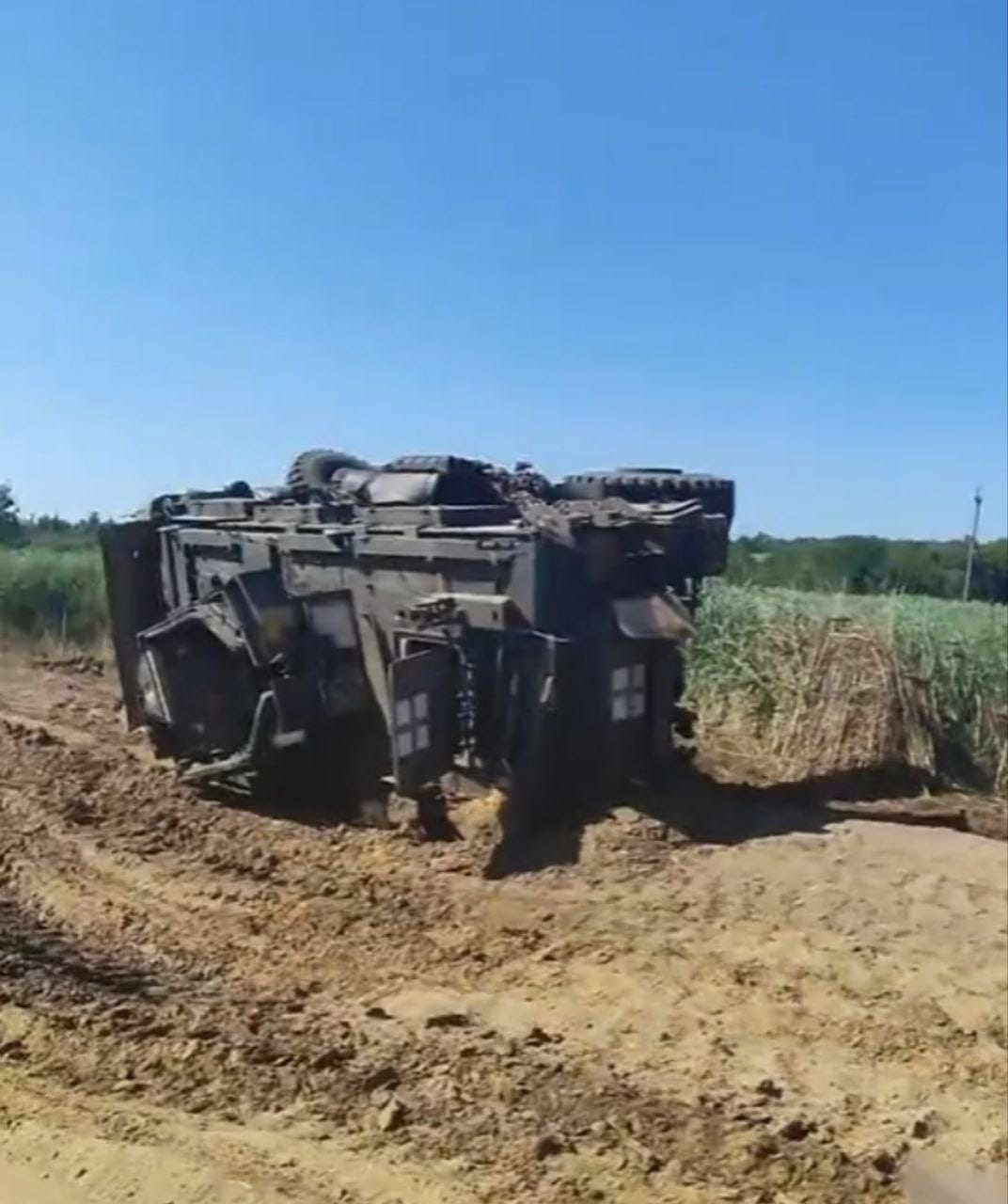

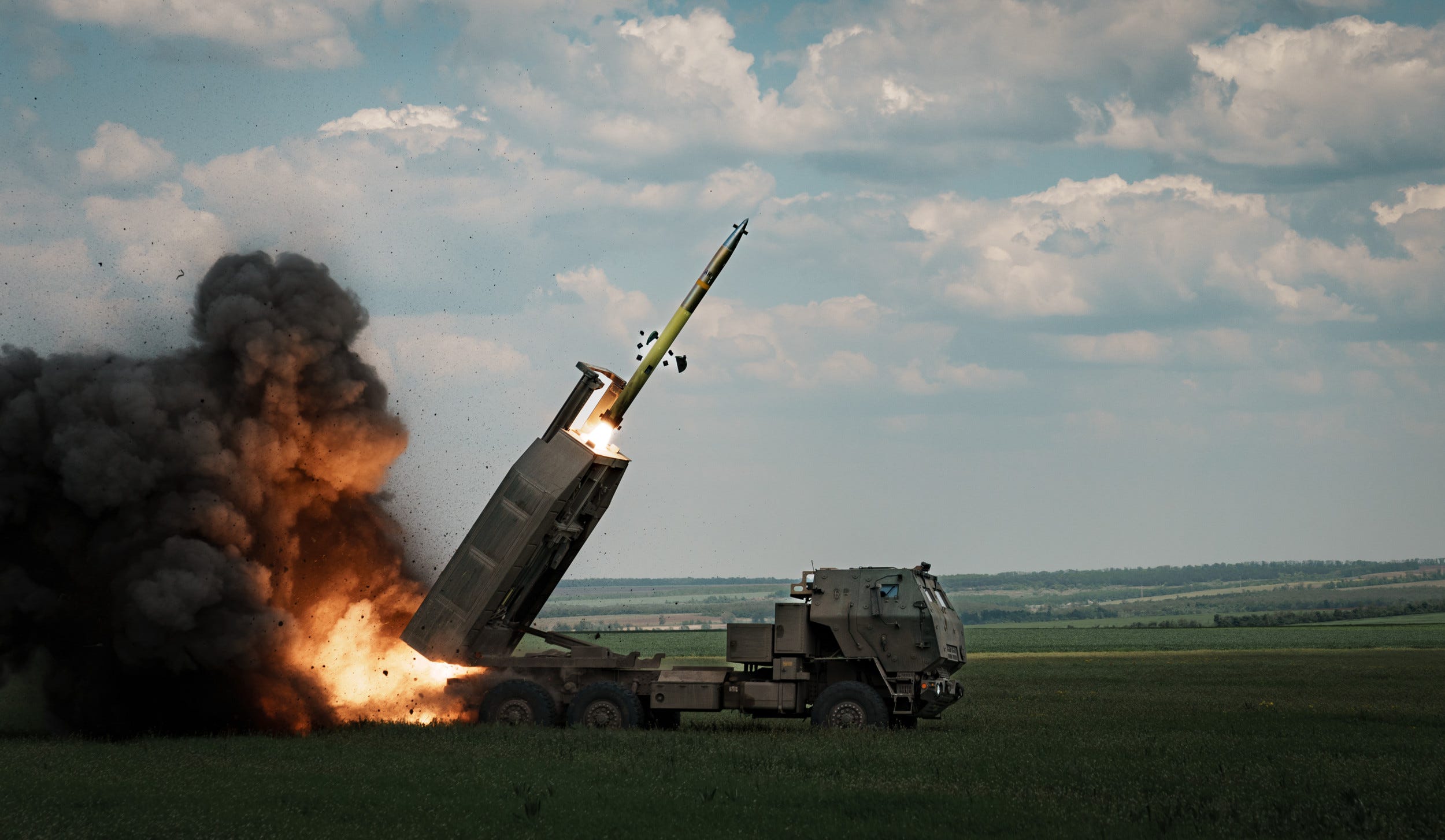



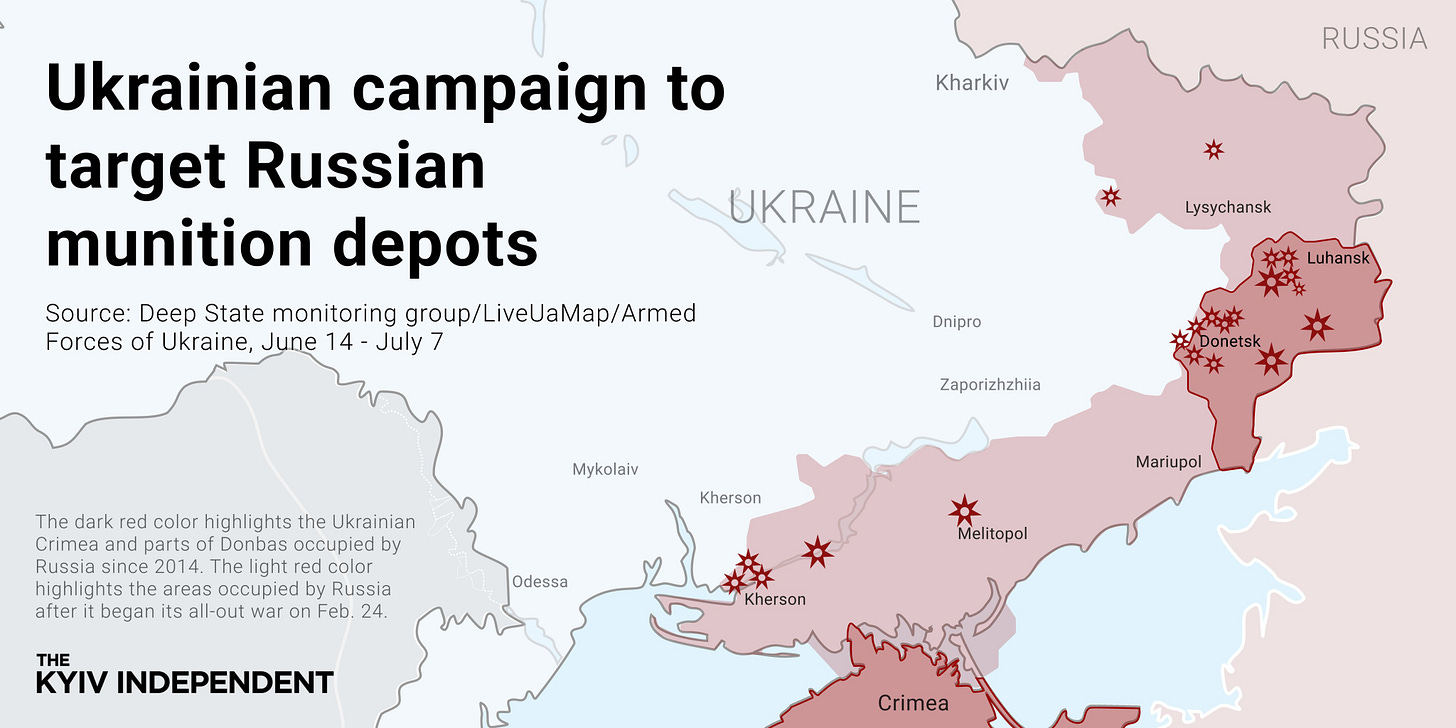


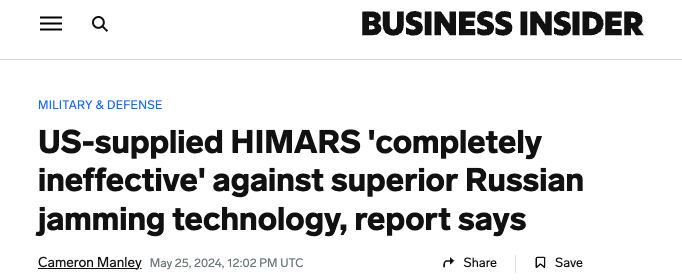
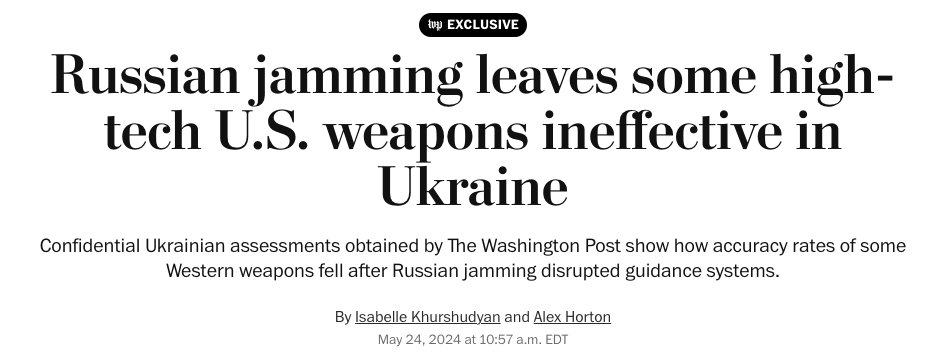
Uragan-1M isn't the Russian equivalent to HIMARS. Tornado-S is. Tornado-S is is guided like HIMARS, and intended for the same "shoot and scoot" role as HIMARS. Though, Tornado-S is of a larger caliber of 300mm as it is an evolution of the BM-30 Smerch, and has a maximum range of ~200km.